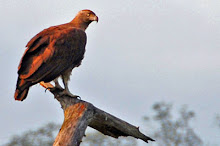Navarasa- Expressions in BharataNatyam
 [ Web Album ]
[ Web Album ]The dancers presented NavaRasa-The Nine Emotions in BharataNatyam, the South Indian Classical dance, by selecting several scenes from mythology and literature. Concept and choreography by Usha Raghavan, founder-director of Kalasagara UK, in aid of a charity, Veerayatan, for their ongoing Sponsor-a-child programme to benefit the earth-quake hit areas of Gujarat.
{ Nava means "Nine" and Rasa is often translated as "mood", "emotion", "expression" or "sentiment". The Navarasa, in the dance scriptures refer to the nine expressions that humans often show. These are love ( shringaara ), laughter ( haasya ), kind-heartedness or compassion ( karuna ), anger ( roudra ), courage ( veera ), fear ( bhayaanaka ), disgust ( beebhatsa ), wonder or surprise ( adbhutha ) and peace or tranquility ( shaantha ). }
[Image above: Depicting Roudra [Anger].Lord Shiva's dance of fury when his penance is disturbed by Manmatha, the God of Love. Finally Shiva burns Manmatha to ashes ]
According to Nātya Shastra, the ancient indian treatise on dance, music and dramatic arts, Rasa is an emotion inspired in an audience by a performer.Rasas are created by bhavas: the gestures and facial expressions of the actors.
The concept of the event sounded quite interesting.. In fact, I have this sort of strange 'dormant fixation at the back of the mind which will easily rise to the surface', a 'deep but subconscious appeal', if you will, with this NavaRasa theme, ever since closely watching the gripping facial expressions of artistes with heavy colourful make-ups perform during the local temple festivals, back home during my childhood..
Now, for years, been waiting for a chance to watch professional artists performing with such a theme. For this event, dancers are not professionals, but the performance was quite impressive..
Though I enjoyed capturing it bacause I've been wanting to do it for long, didn't quite like the results ;-l

I so much wanted to capture each emotion portrayed, but that being the case, I had only very limited success with the camera [ though that's very much expected.. Well, you can always find excuses for doing a sloppy job and find fault with everything else other than your Holy Self! ;) So here goes my crib-list-- struggling to get the right angle and enough light, even after pushing to ISO 800 or 1000, and without wanting to use flash at all; also fighting the shake while hand-holding at >1/50 sec on 150~200mm range, and tracking the fast movements with spot-metering can be tricky.. ] Well, to be fare it's a great stage to learn!
There were nine sessions/acts :
1. Sringara [Love]. Scene : Radha &Krishna
2. Hasya [Laughter]. Scene : Shoorpanakha, Rama & Lakshmana
3. Karuna [Compassion].
Scene : story of Nandanar (from a song in Tamil literature)
4. Roudra [Anger]. Scene : Shiva &Manmatha
5. Veera [Courage]. Scene : Rama at Sita's Swayamvara
6,7. Bhayanaka [Fear] & Beebhatsa [Disgust]. Scene : Vyasa, Ambika, Ambalika.
8. Adbhuta [Wonder]. Scene- Vamana &Mahabali.
9. Shanta [Tranquility/Peace]. Scene : Enacting the song Shanti Nilavu Vendum, which calls for peace and harmony,as preached by Mahatma Gandhi, in this world of sorrow and turmoil.

Apparently, according to the teacher who organised this show, Shanta was the most difficult rasa to do choreography for!. Incidentally, a bit of wikiing revealed that Nātya Shastra identifies the first eight rasas with eight corresponding bhava - Rati (Love), Hasya (Mirth), Soka (Sorrow), Krodha(Anger),Utsaha (Energy), Bhaya (Terror), Jugupsa (Disgust), Vismaya (Astonishment).
Ironically, that makes you think, that may be to evoke Shanta, we wouldn't need any effort, any bhava- special expressions or gesture.. and we can just BE. Is it because Shanta, being very peaceful, is our True Nature ?? ;)

5 Comments:
I was searching for navarasa and came across this article. nice one. I liked the examples given for every bhava. They are very useful. Thanks for sharing.
Shantha...
I like what Jith said about, being able to feel peace is our true nature. The only way you can portray shantha in dance, is through sathvika abinaya. Where you feel the peace, and it come out automatically. This proves Buddha's point, 'what you feel, you become'. I think this goes for each of the Navarasa too.
Priya
Really nice article..very interesting!!
eliana said...
very interesting and informative
helped me like a lot in my project...
really a nice article. I would love to hear the sloka too. If anyone can post me it will be great.
Aruna_rengasamy@yahoo.co.in
Thanks in advance
Aruna
Post a Comment
<< Home